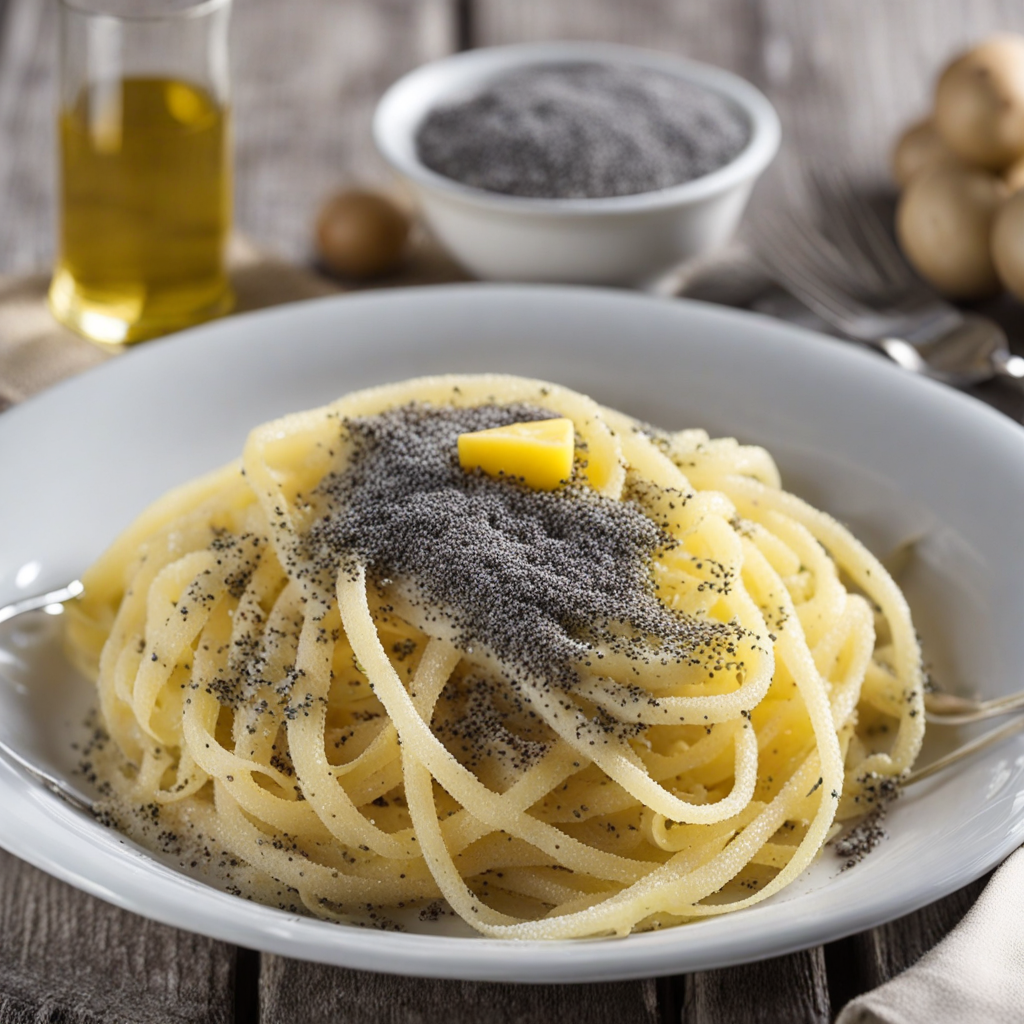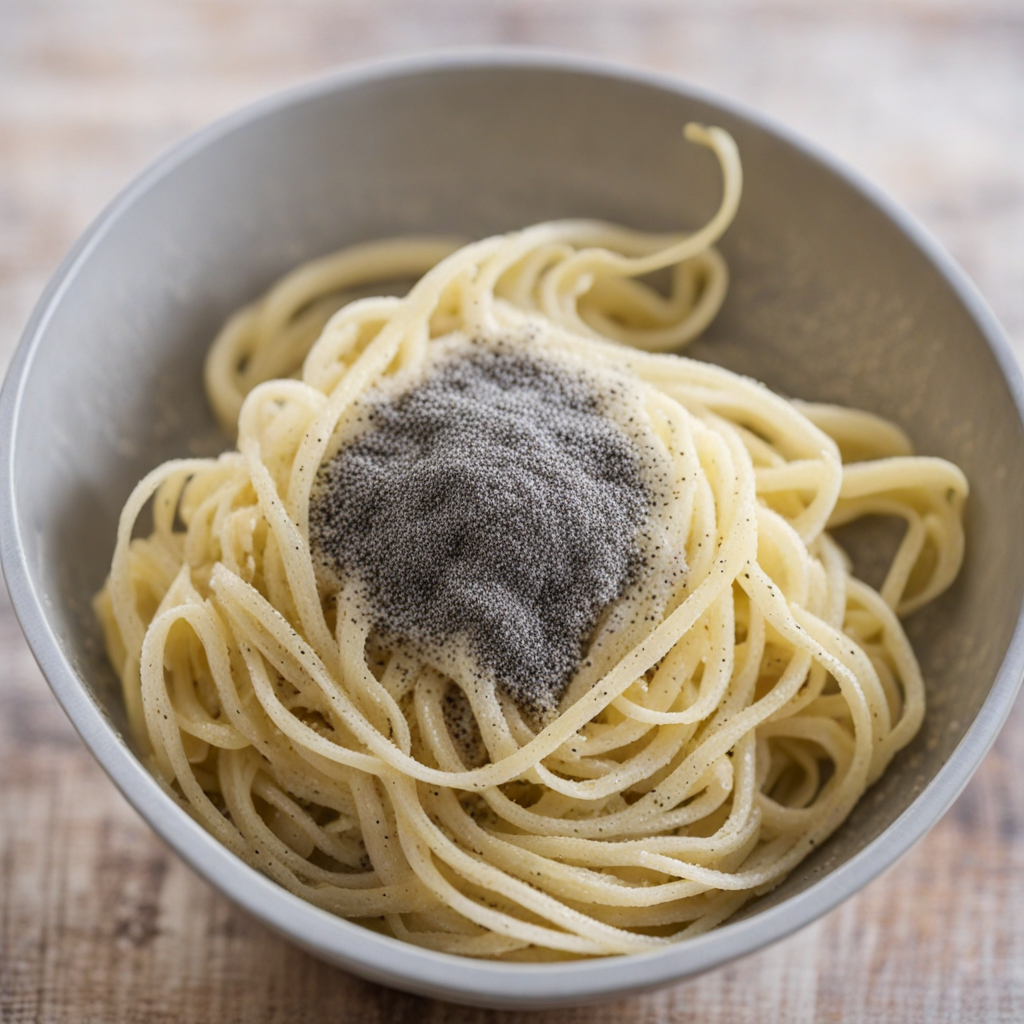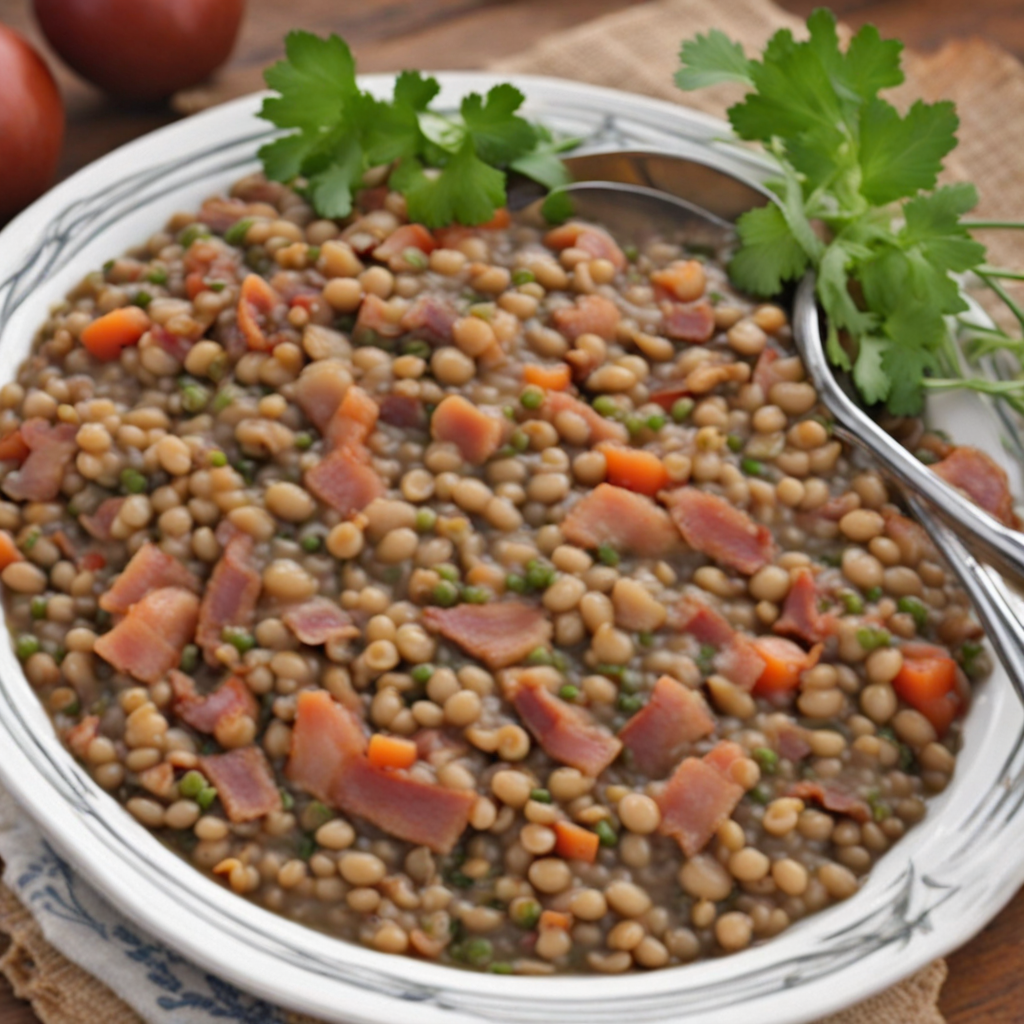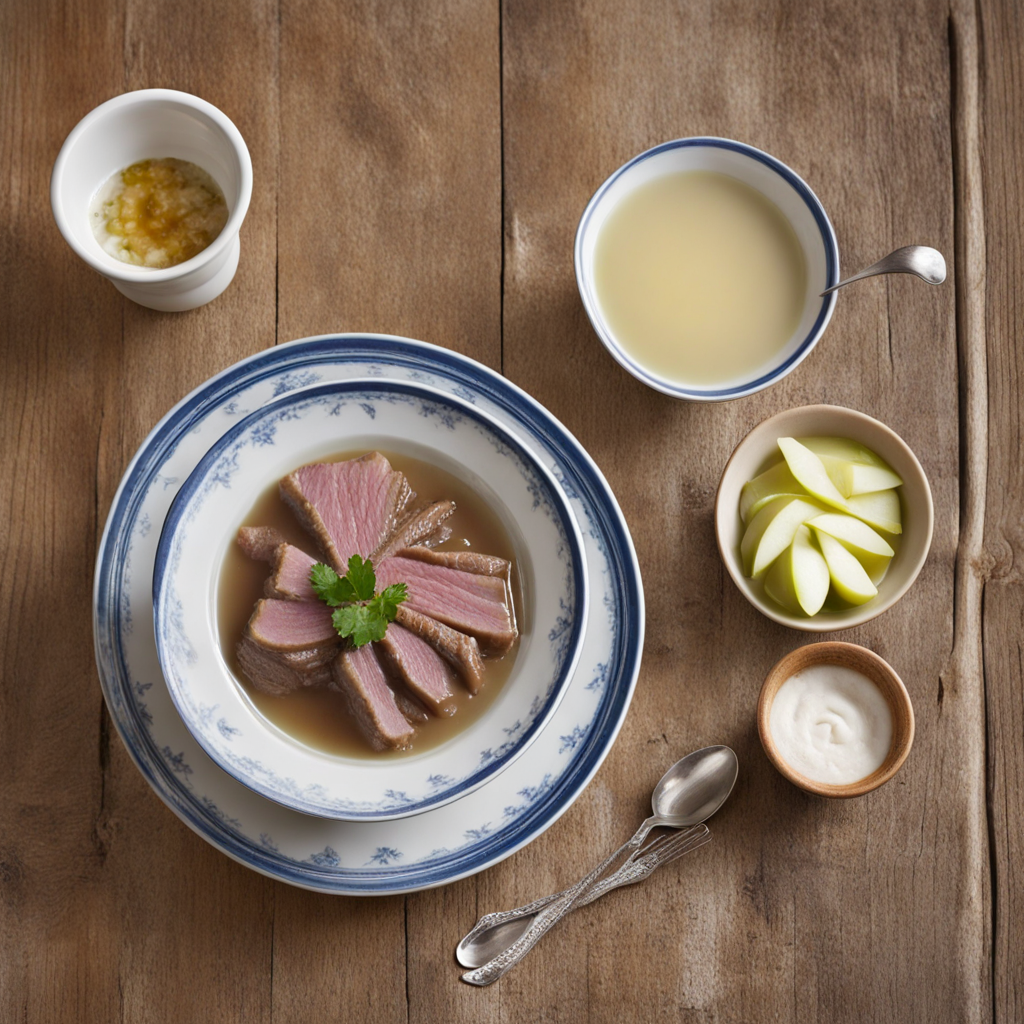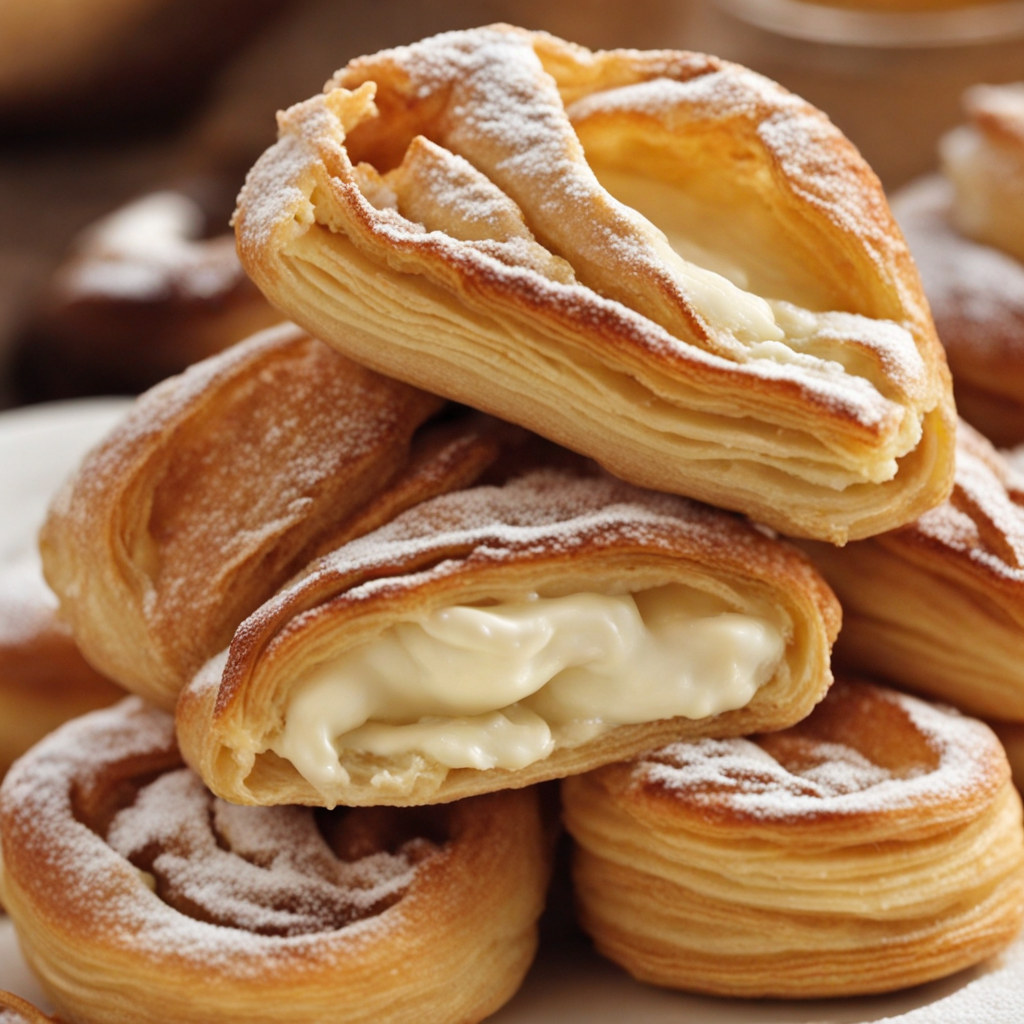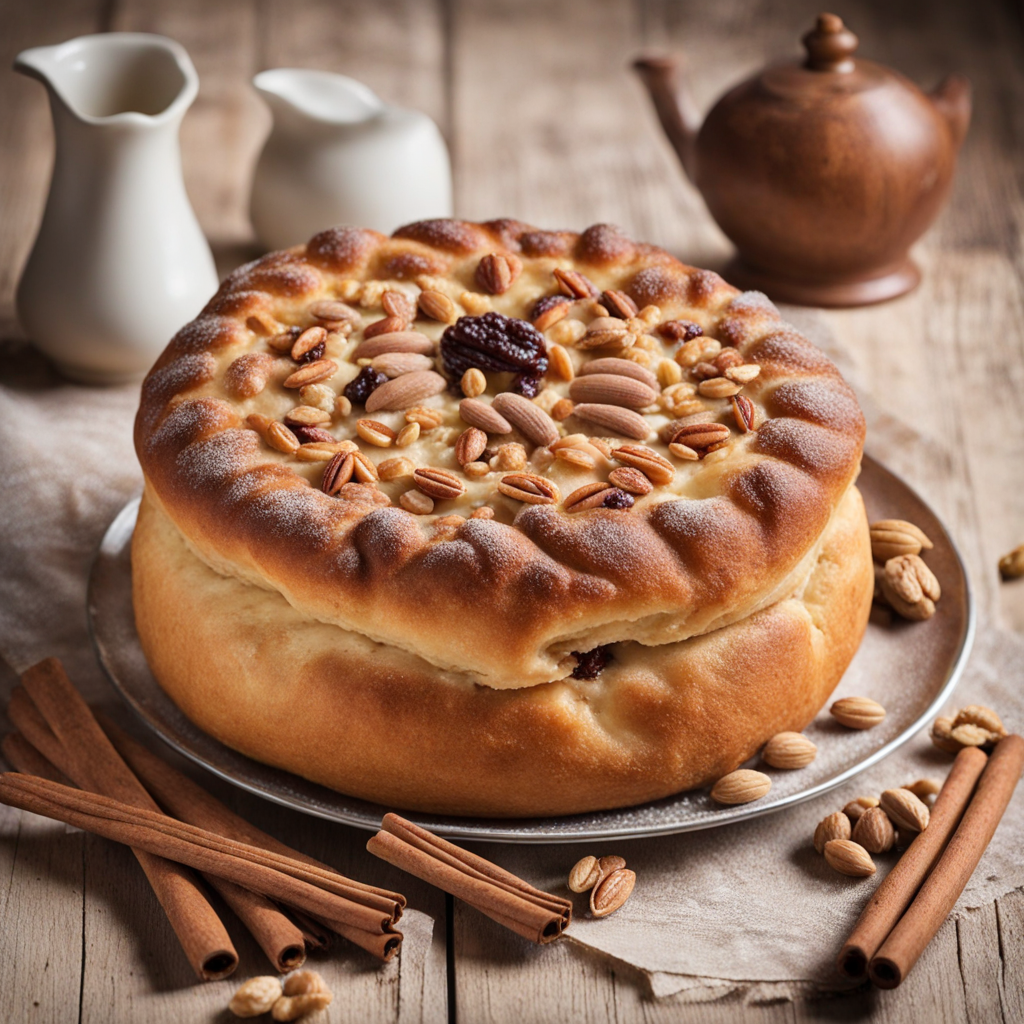Mohnnudeln
Mohnnudeln, a traditional Austrian dish, is a delightful and comforting treat that beautifully showcases the rich culinary heritage of the region. This dish consists of soft, pillowy noodles that are typically made from a simple mixture of flour, eggs, and water. The noodles are often rolled out and cut into strips or squares, providing a tender base that complements the star ingredient: poppy seeds. The poppy seeds are ground into a fine powder and mixed with sugar, creating a sweet and nutty flavor profile that is both unique and indulgent. The preparation of Mohnnudeln is a labor of love, as the noodles are boiled to perfection and then generously coated with the sweet poppy seed mixture. This process not only enhances the flavor but also adds a delightful texture, as the poppy seeds cling to the noodles, creating a delightful contrast between the soft pasta and the slightly crunchy seeds. Often served with a drizzle of melted butter or a sprinkle of powdered sugar, Mohnnudeln is a dish that invites you to indulge in its rich, comforting taste. This dish is often enjoyed as a dessert or a hearty snack, making it a versatile addition to any culinary repertoire. Mohnnudeln can be found in various Austrian eateries, where it is lovingly prepared and served, reflecting the deep-rooted traditions of the country. With its unique blend of flavors and textures, Mohnnudeln offers a delightful experience for anyone looking to explore the tastes of Austria, leaving you with a satisfying and memorable culinary journey.
How It Became This Dish
The Fascinating History of Mohnnudeln: A Culinary Gem of Austria #### Origins and Ingredients Mohnnudeln, or poppy seed noodles, is a traditional dish from Austria that beautifully encapsulates the country’s rich culinary heritage. Its origins can be traced back to the rural regions of Central Europe, particularly Austria and parts of neighboring countries like Hungary and the Czech Republic, where poppy seeds have been cultivated for centuries. The poppy plant, with its striking blue flowers and tiny black seeds, has long been associated with agriculture and cuisine in these regions. The primary ingredients of Mohnnudeln include egg noodles, poppy seeds, sugar, and butter. The noodles are typically made from simple ingredients: flour, eggs, and a pinch of salt. The addition of poppy seeds lends a unique flavor and texture to the dish, while the sugar and butter elevate it into a comforting dessert or sweet main course. Poppy seeds themselves are rich in nutrients, containing healthy fats, proteins, and minerals, making them a valuable food source in the past. #### Cultural Significance The cultural significance of Mohnnudeln extends beyond its deliciousness; it reflects a deep-rooted tradition of agriculture and food preservation. Poppy seeds have long been a staple in rural farming communities, celebrated not only for their culinary uses but also for their symbolic meanings. In various cultures, poppies are associated with sleep, peace, and fertility, and they have often been used in folk remedies and traditional rituals. In Austria, Mohnnudeln is more than just a dish; it represents a connection to the land and the seasons. The dish is often prepared during harvest time, a period when families celebrate the fruits of their labor and come together to enjoy hearty meals. It is commonly served on festive occasions, such as Christmas and family gatherings, as well as during Lent, when many households forgo meat dishes. #### Evolution Over Time The evolution of Mohnnudeln can be viewed through the lens of Austria's culinary history. In the 19th century, as the Austro-Hungarian Empire expanded, so did the culinary exchanges between different cultures. Dishes like Mohnnudeln began to incorporate influences from other regions, reflecting the empire’s diverse population. As a result, variations of the dish emerged in neighboring countries, each adding its unique twist to the basic recipe. In Austria, the popularity of Mohnnudeln grew significantly during the 20th century. The dish became a staple in Austrian households, especially in the regions of Lower Austria and Styria, where poppy cultivation was prevalent. The rise of the culinary arts movement in the late 20th century also contributed to the resurgence of traditional dishes like Mohnnudeln. Chefs began reinterpreting classic recipes, incorporating modern techniques and presentations while still honoring their roots. #### Preparation Techniques Traditionally, the preparation of Mohnnudeln involves several steps. The noodles are first boiled until tender, then drained and tossed with melted butter to prevent sticking. The star of the dish, the poppy seeds, is ground and mixed with sugar to create a sweet paste. This mixture is then added to the noodles, allowing the flavors to meld together beautifully. While the basic preparation remains consistent, variations have emerged over time. Some cooks prefer to use fresh egg noodles, while others opt for dried varieties. Additionally, the ratio of poppy seeds to sugar may vary according to personal taste, with some opting for a more pronounced sweetness, while others favor the nutty flavor of the seeds. In recent years, there has been a growing trend toward using organic and locally sourced ingredients. Many chefs and home cooks are now keen to support sustainable farming practices, leading to a renewed appreciation for traditional recipes. This trend is particularly evident in Austria, where farm-to-table dining has gained popularity, allowing diners to experience the authentic flavors of local cuisine. #### Mohnnudeln in Modern Cuisine Today, Mohnnudeln holds a cherished place on the menus of both traditional Austrian restaurants and modern eateries. As chefs experiment with new culinary techniques and presentations, the dish has been reimagined in creative ways. For instance, some restaurants serve Mohnnudeln with a dollop of sour cream or a drizzle of chocolate sauce, adding a contemporary twist to this beloved classic. Moreover, the rise of globalization and the internet has facilitated the spread of Austrian cuisine beyond its borders. Food enthusiasts from around the world have discovered Mohnnudeln through social media and cooking blogs, leading to its increased popularity in international culinary circles. This has also sparked interest in traditional Austrian cooking methods and ingredients, encouraging more people to try their hand at making Mohnnudeln at home. #### A Culinary Legacy As we delve into the history of Mohnnudeln, it becomes clear that this dish is more than just a delightful combination of flavors; it is a testament to Austria's agricultural heritage, cultural traditions, and culinary evolution. The dish has transcended time, adapting to changing tastes and trends while remaining true to its roots. In an era where food is often viewed through a lens of novelty and experimentation, Mohnnudeln serves as a reminder of the beauty of tradition. It invites us to slow down, appreciate the simple joys of cooking, and connect with our culinary heritage. Whether enjoyed at a family gathering, a festive celebration, or a modern restaurant, Mohnnudeln continues to bring people together, fostering a sense of community and belonging. As we savor this delightful dish, we not only taste the flavors of Austria but also partake in a rich history that celebrates the land, the people, and the enduring legacy of culinary traditions. Mohnnudeln is, indeed, a culinary gem worth cherishing and preserving for generations to come.
You may like
Discover local flavors from Austria


